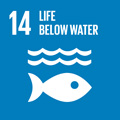- Docente: Fausto Tinti
- Credits: 8
- SSD: BIO/05
- Language: Italian
- Moduli: Fausto Tinti (Modulo 1) Andrea Luchetti (Modulo 2)
- Teaching Mode: In-person learning (entirely or partially) (Modulo 1); In-person learning (entirely or partially) (Modulo 2)
- Campus: Bologna
- Corso: First cycle degree programme (L) in Natural Sciences (cod. 5823)
-
from Feb 25, 2026 to Jun 04, 2026
-
from Mar 19, 2026 to Jun 04, 2026
Learning outcomes
This course provides an overview of the invertebrate and vertebrate animals. Topics include animal classification and phylogeny, anatomical structure and function, and roles in the environment. Laboratory practical work emphasises observation and investigation of preserved specimens. On successful completion of the course students should be able to: describe the fundamental differences among animal body plans and relate them to evolutionary relationships among phyla; describe key issues concerning these animals in nature; identify many animal specimens to phylum, class, order, or lower taxonomic levels; identify anatomical structures from prepared specimens.
Course contents
The course includes two modules: lectures and practical/lab activities/field training.
LECTURES (Prof. Fausto Tinti).
The aim of this module is to provide knowledge of animal environmental diversity through the teaching of both systematic zoology — i.e., the classification and phylogeny of animal taxa — and zoogeography, life-history traits, and evolutionary-selected adaptations for carrying out vital functions.
Using taxonomic skills (at the Phylum and Class levels; in some cases, at the Order level) and an evolutionary approach, we will study the diversity of all animal phyla, with in-depth focus on life-history traits and adaptations for the phyla and phylum groups that are most important for understanding the diversity of the planet and of marine, terrestrial, and transitional ecosystems.
PRACTICAL/LAB ACTIVITIES AND FIELD TRIP (Profs. Andrea Luchetti and Fausto Tinti).
The aim of this module is to provide the skills necessary to critically observe and identify life-history traits of animal phyla and phylum groups and their selected adaptations, through the study of zoological and osteological specimens from teaching and museum collections. Lastly, the course includes a didactic experience in a regional park, supported by the managing authority, to understand the value of conserving animal diversity.
The practical sessions will therefore take place in the classroom/laboratory and in the museum. The field training will be a one-day activity, with organization currently underway.
The detailed syllabus for the lab sessions and field training will be provided during the first lecture of the course.
Readings/Bibliography
or another textbook of equivalent level and content
Teaching methods
- Lectures with the aid of presentations (which are not sufficient for preparation, as studying must necessarily be done using the recommended textbook or one of an equivalent level)
- Practical exercises in the laboratory, in the museum, and during educational field trips
Assessment methods
1st Test – Written Exam (on EoL): 5 open-ended questions. Graded out of 30, weight on final grade: 60%; minimum score required to access the oral exam: 20/30.
2nd Test – Oral Exam: Questions based on the answers given in the written test and additional topics, along with critical analysis of zoological specimens. Graded out of 30, weight on final grade: 40%.
Students with learning disorders and\or temporary or permanent disabilities: please, contact the office responsible as soon as possible so that they can propose acceptable adjustments. The request for adaptation must be submitted in advance (15 days before the exam date) to the lecturer, who will assess the appropriateness of the adjustments, taking into account the teaching objectives.
Teaching tools
- Independent study of the educational zoological collections (access by reservation, 1-hour slots, maximum of 5 students per slot)
- Independent study of the university museum collections (open access, based on the museums’ opening hours)
Office hours
See the website of Fausto Tinti
See the website of Andrea Luchetti
SDGs


This teaching activity contributes to the achievement of the Sustainable Development Goals of the UN 2030 Agenda.
